|
||||
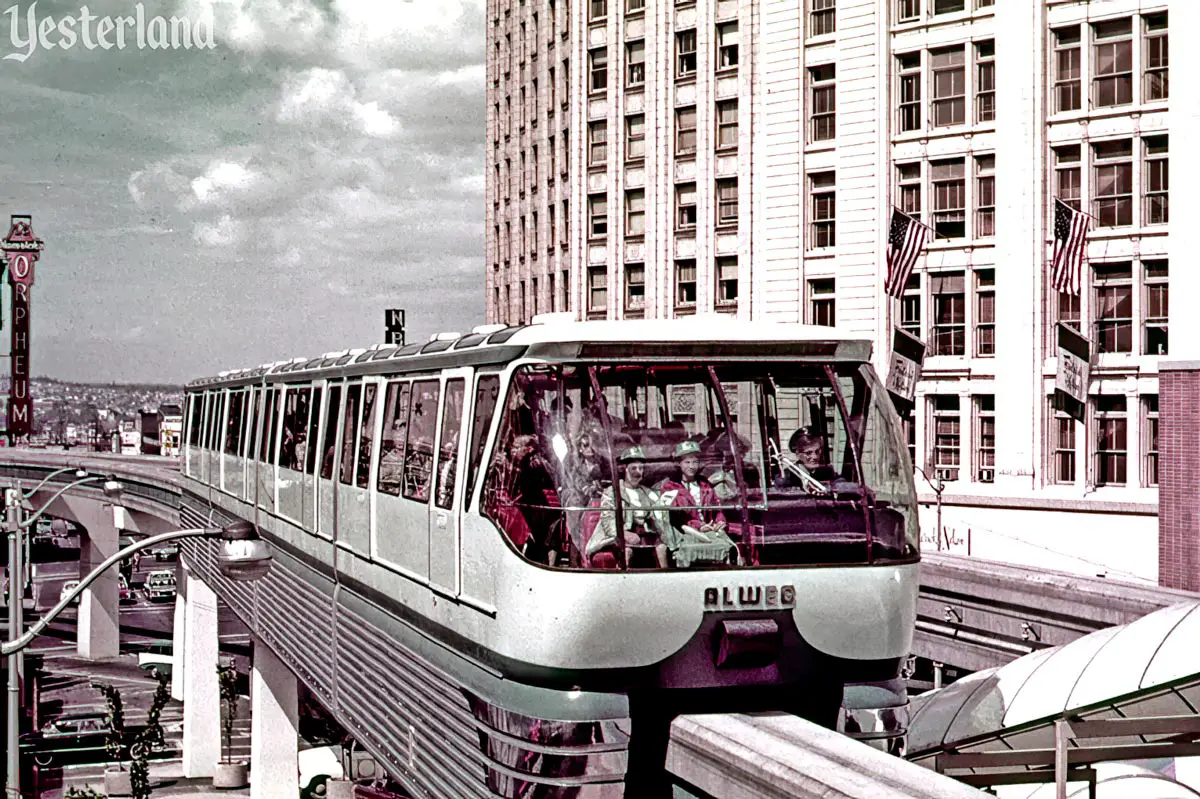
1962 photo, item 73122, courtesy of the Seattle Municipal Archives |
||||
|
The year is 1962. You’re in downtown Seattle. You want to visit the World’s Fair, a mile away. You could walk, but there’s a faster way. Hop on the futuristic Monorail, built by Alweg Rapid Transit System specifically for the World’s Fair. The ride is one dollar, one way. |
||||
|
|
||||
|
If the name Alweg seems familiar, perhaps it’s because you’ve ridden the Disneyland-Alweg Monorail at the Happiest Place on Earth, a thousand miles to the south. The German company Alweg, founded by Swedish entrepreneur Axel Lennart Wenner-Gren, is the leader in Monorail technology. To tell the truth, the system at Disneyland isn’t a real Alweg system. Although it includes the Alweg name and uses technology from Alweg, the system was designed and built by Walt Disney’s WED Enterprises. Brilliant young WED designer Bob Gurr gave Disneyland’s version a sleek Space Age look. |
||||
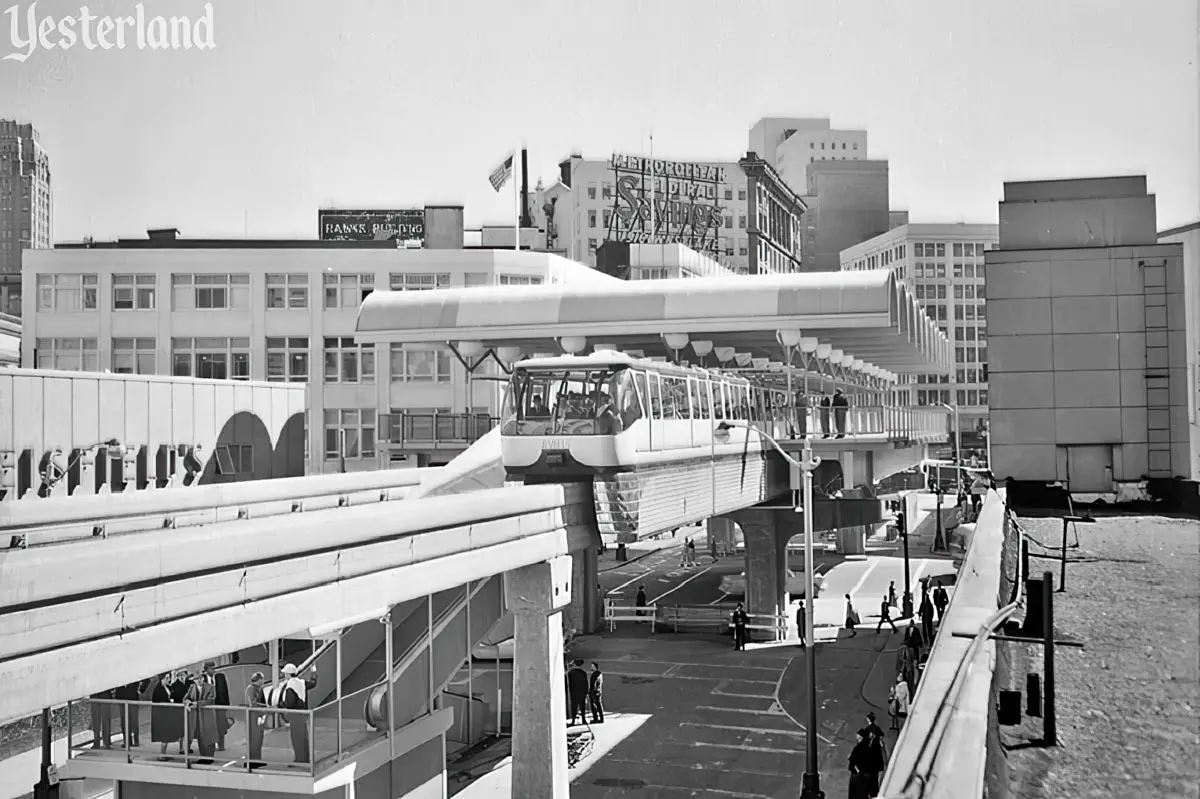
1962 photo, item 70912, courtesy of the Seattle Municipal Archives Seattle Monorail at its original downtown station, 1962 |
||||
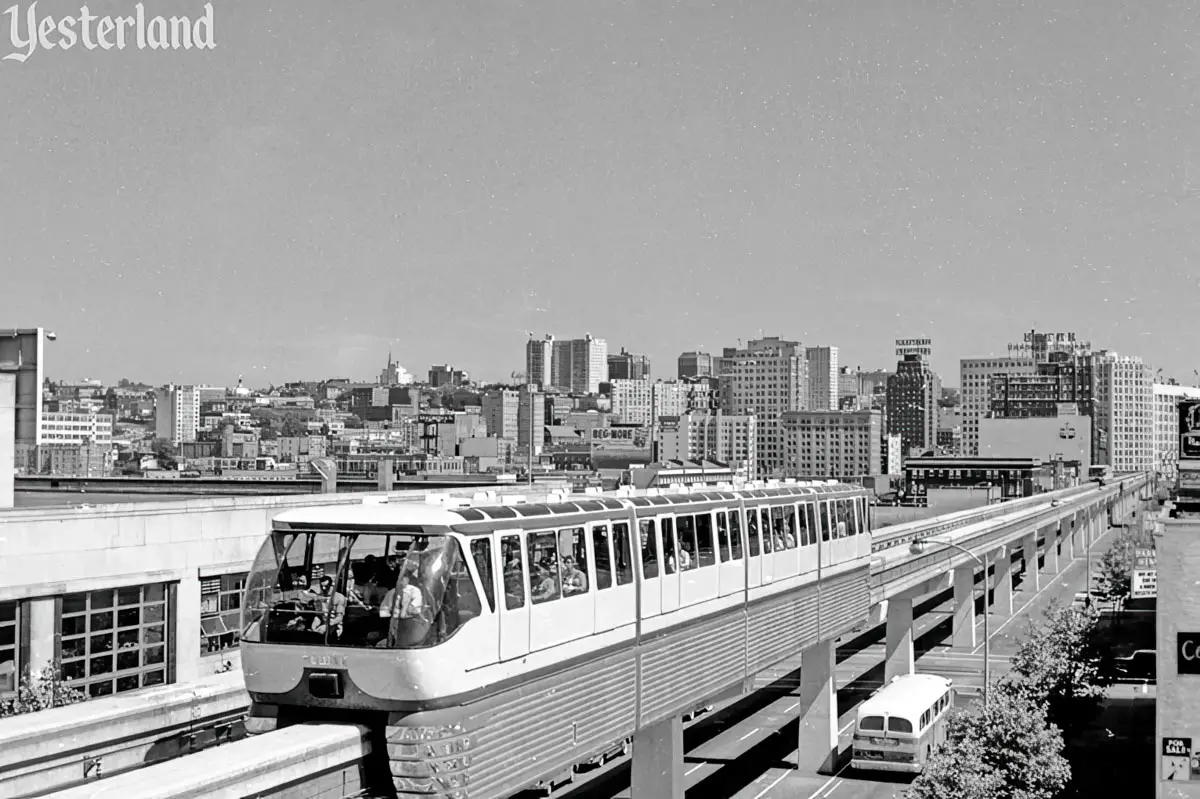
1962 photo, item 73117, courtesy of the Seattle Municipal Archives Seattle skyline, with Seattle Monorail on 5th Avenue, 1962 |
||||
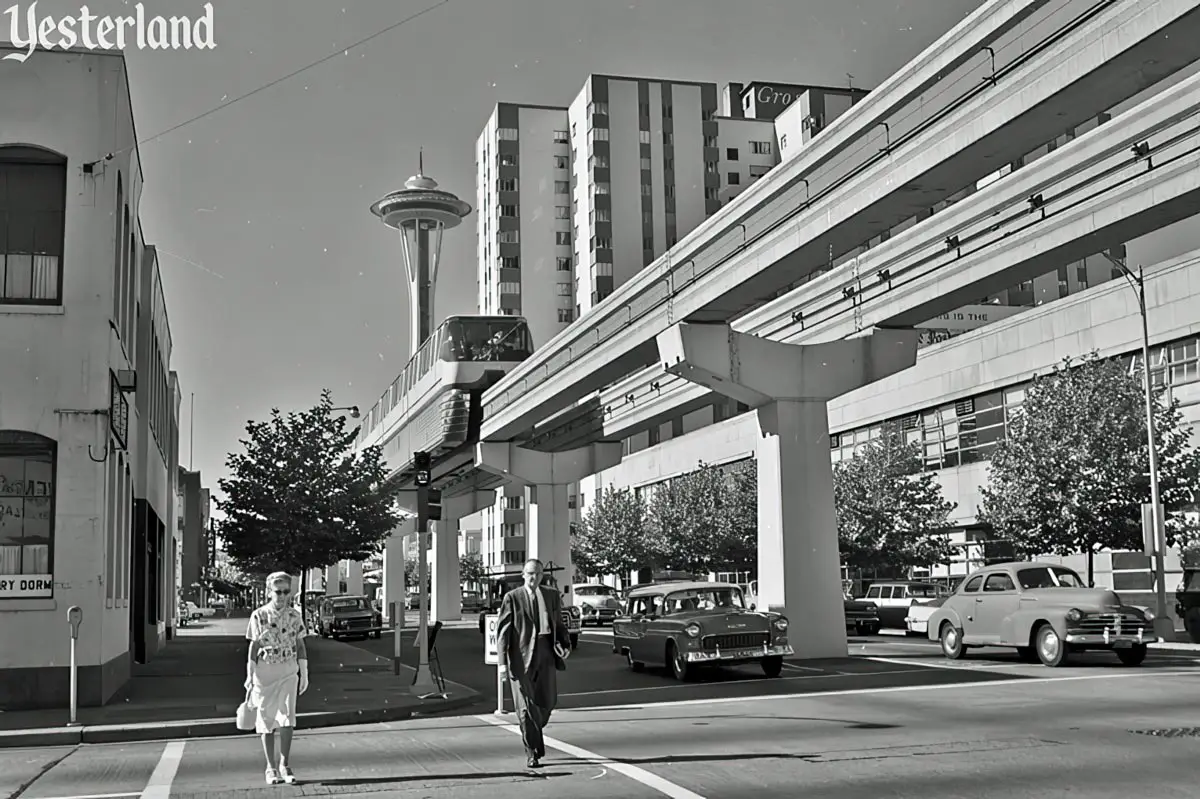
1962 photo, item 73485, courtesy of the Seattle Municipal Archives Seattle Monorail and Space Needle, 1962 |
||||
|
Although Seattle’s Alweg Monorail is almost three years newer than Disneyland’s, the trains in Seattle aren’t as sleek. But they look pretty good in their own way. With large windows and spacious interiors, they provide a terrific passenger experience on the brief ride. There are two four-car trains, two parallel tracks, and two stations. Each train has identical ends, and shuttles back and forth on its own track. The driver moves to whichever end is the front, depending on the direction of travel. The trains are capable of going 75 miles per hour. When both trains are operating, the system can handle 8,000 passengers per hour. |
||||
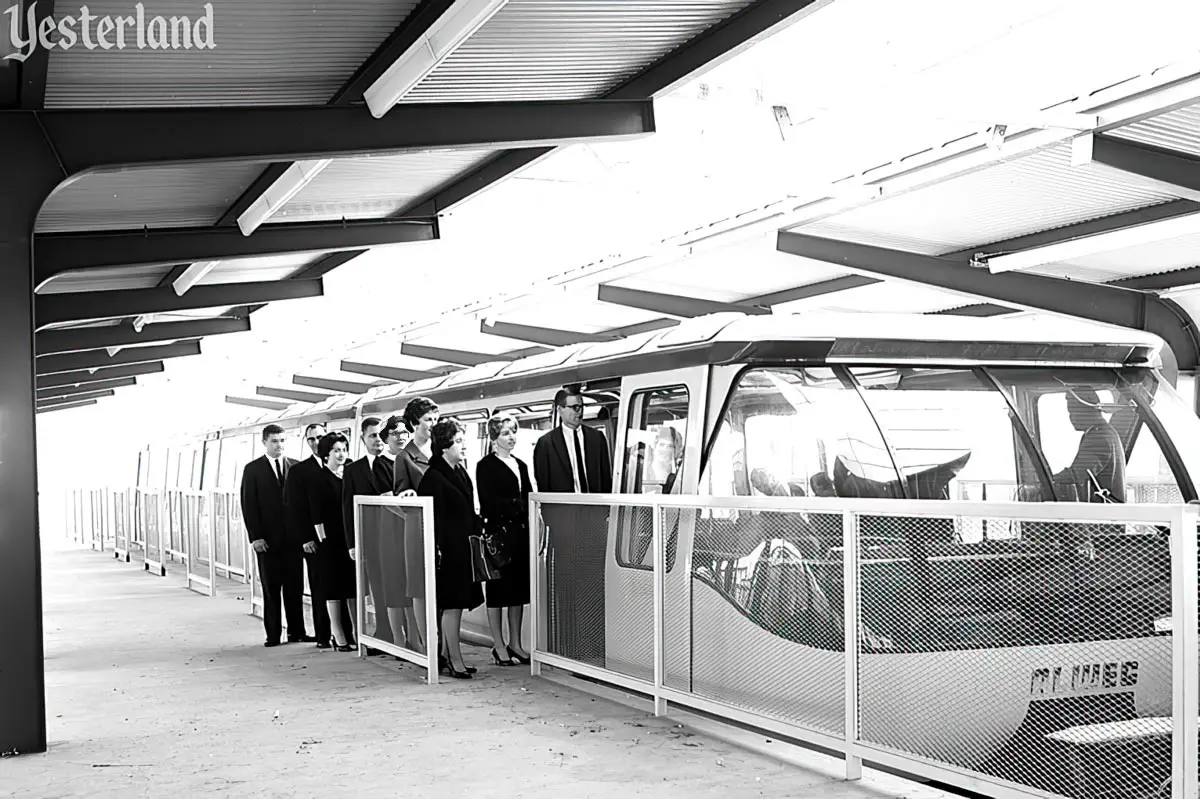
1962 photo, item 165724, courtesy of the Seattle Municipal Archives Seattle Monorail at its World’s Fair station, 1962 |
||||
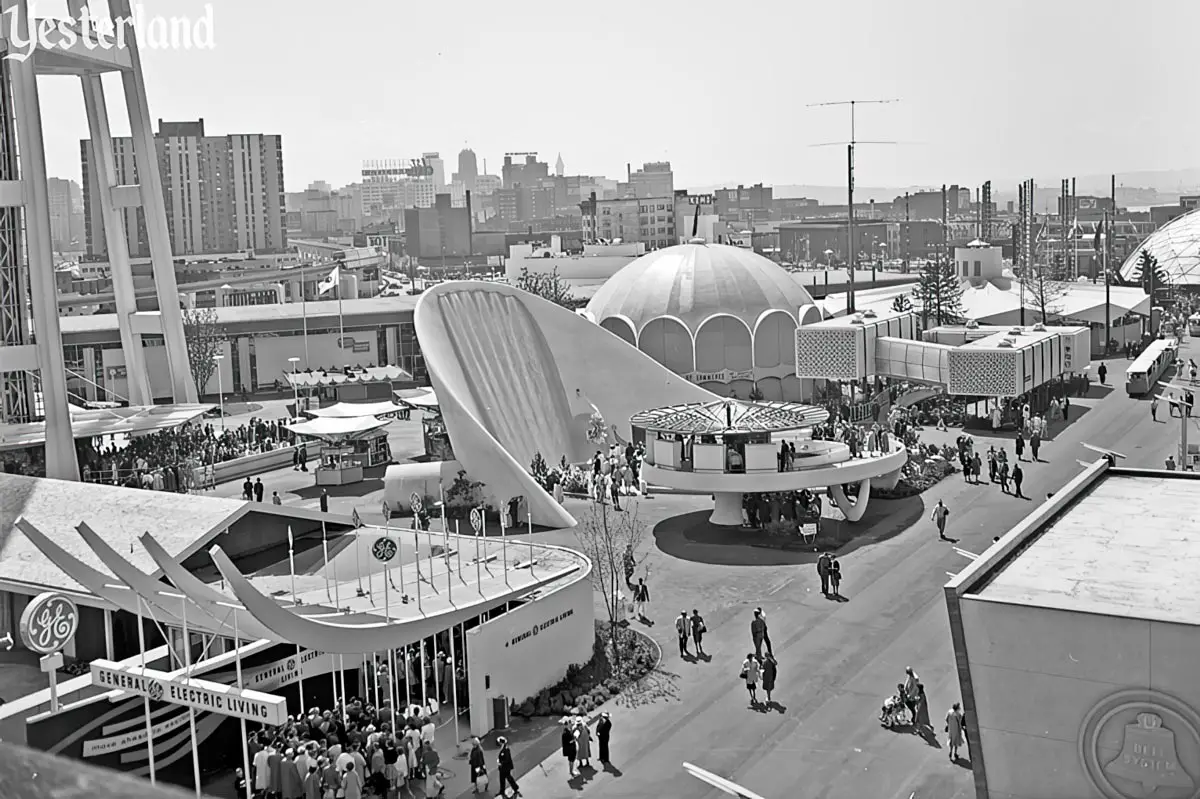
1962 photo, item 78891, courtesy of the Seattle Municipal Archives Some of the pavilions of the 1962 Seattle World’s Fair / Century 21 Exposition |
||||
|
You’ve arrived at the World’s Fair, where you’ll enjoy a preview of the 21st century. As World’s Fairs go, the Century 21 Exposition is not a big one. But it is an official Universal Exposition, sanctioned by the Bureau International des Expositions—unlike the 1964-65 New York World’s Fair planned for Flushing Meadows. The Monorail started running March 24, 1962. The World’s Fair has been going since April 21, 1962. When the Fair closes October 21, 1962, the Monorail is supposed to be removed. So enjoy it while you can. |
||||
|
|
||||
|
Six days before the opening of the Fair, the New York Times wrote about it (“Seattle: Portrait of a Fair City,” by Murray Morgan, April 15, 1962). The article included this about the Monorail: The two attractions that have come to symbolize Seattle’s World’s Fair—the Monorail and the Space Needle—are private enterprises built on public property. The Monorail, which a Seattle taxi-driver has described as “an El with publicity,” is a 1.2-mile track suspended from concrete pylons, running from the heart of the business district to the fair grounds. The city council gave the Alweg Rapid Transit System a franchise to use the city streets without charge provided the Monorail is removed after the fair. But the Monorail system was never removed. It’s still running with its two original trains. After the Fair, the city of Seattle bought the $4,200,000 system from Alweg Rapid Transit System for $600,000. The 1962 World’s Fair site became Seattle Center. It includes holdovers from the Fair, such as the Space Needle, KeyArena (originally the Washington State Coliseum), and Pacific Science Center (originally the United States Science Pavilion). It’s also home to new additions, including the Museum of Pop Culture (MoPOP) and Chihuly Garden and Glass. And it has all sorts of performance spaces, gardens, event spaces, and places to eat. The Alweg Monorail became the Seattle Center Monorail. The system is lovingly maintained. Over the years, there have been setbacks, including a fire and a collision, but the system was always repaired and reopened. Unfortunately, the downtown station was replaced when the previous station site became part of a shopping center. The rest of the photos in this article are from 2017, 55 years after the Monorail opened. |
||||
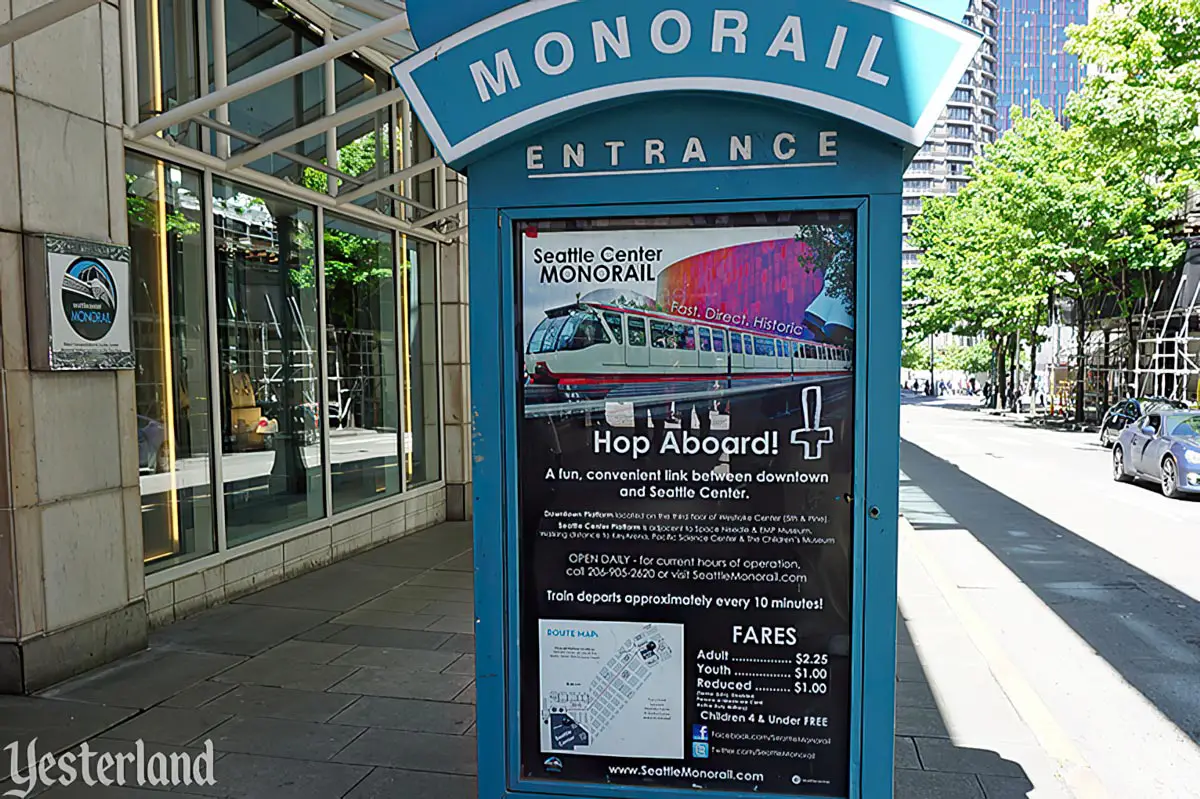
Photo by Werner Weiss, 2017 “Hop Aboard” for $2.25 one-way in 2017 ($3.50 in 2023) |
||||
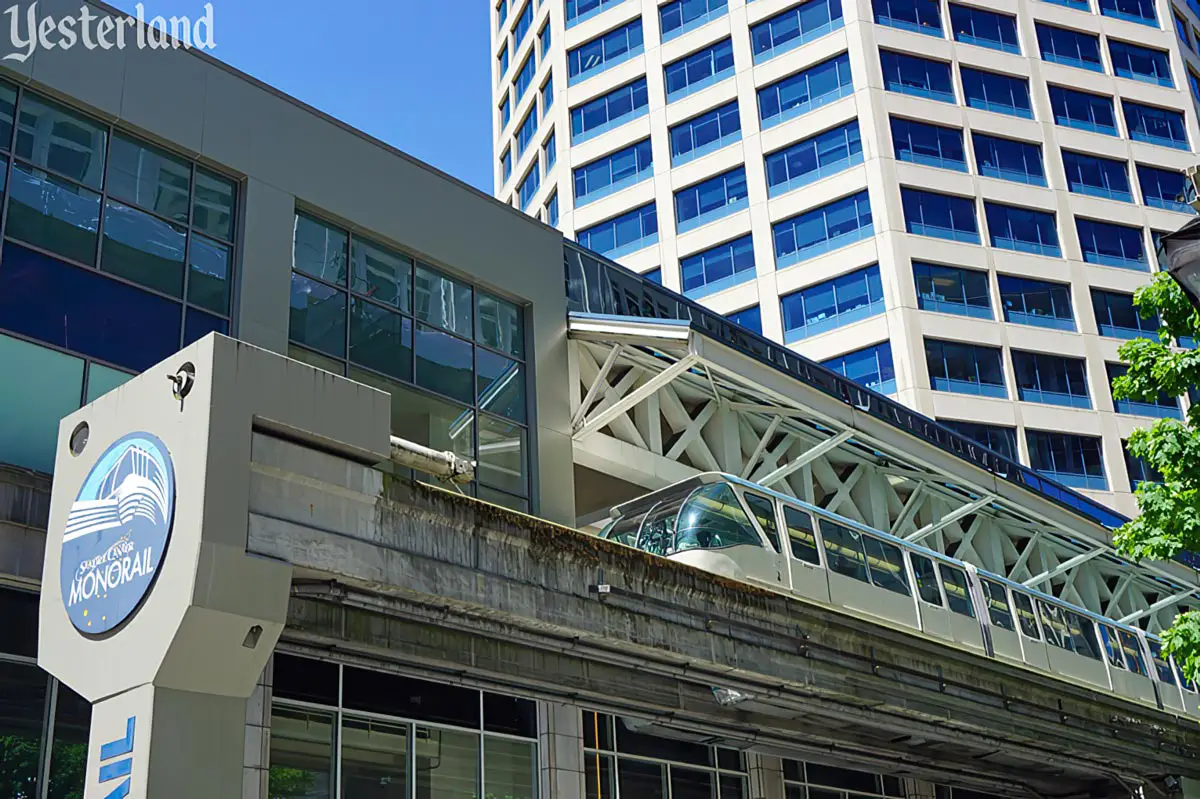
Photo by Werner Weiss, 2017 Current downtown station |
||||
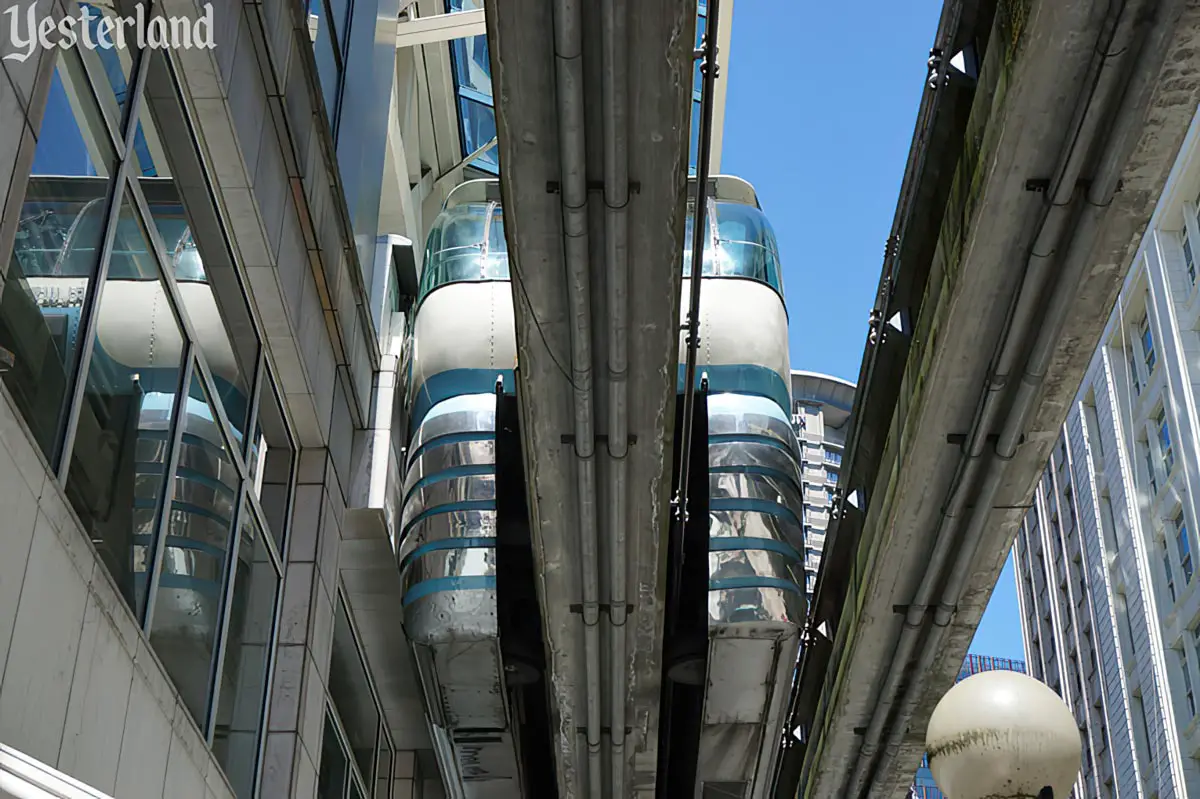
Photo by Werner Weiss, 2017 Monorail in the downtown station, from below |
||||
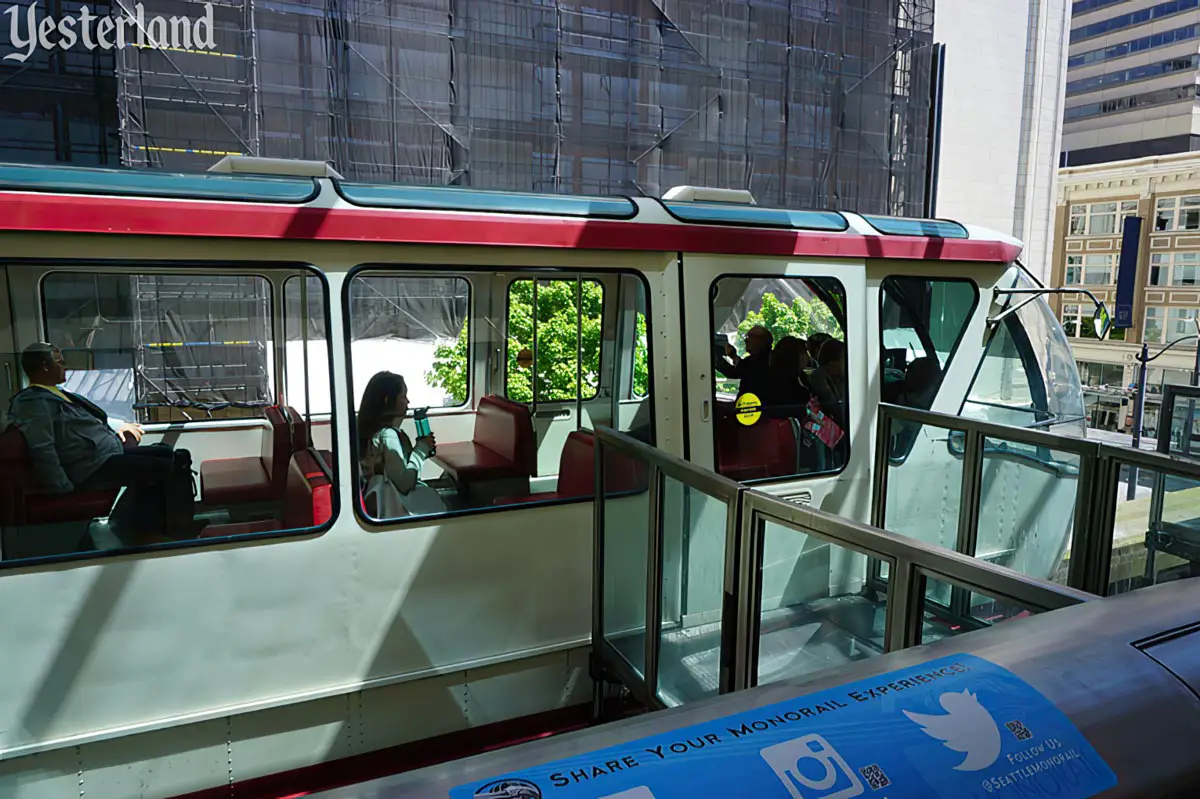
Photo by Werner Weiss, 2017 Current downtown platform |
||||
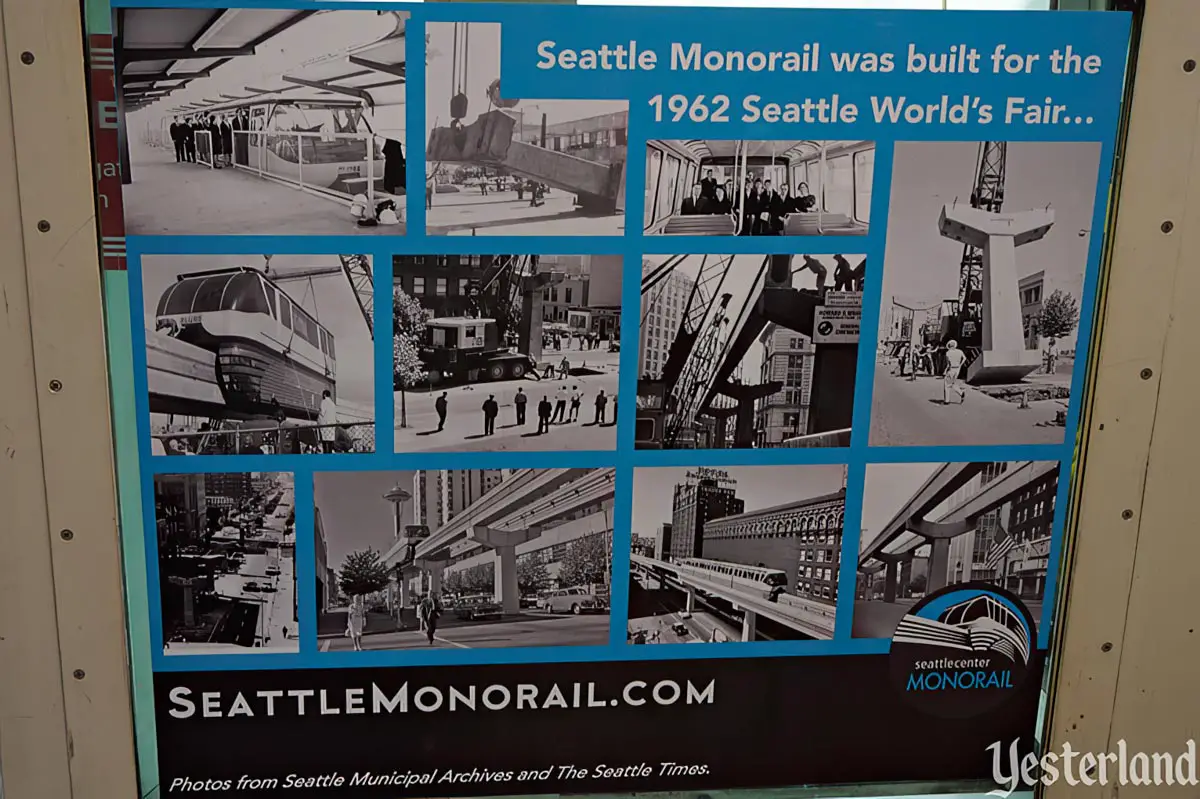
Photo by Werner Weiss, 2017 Seattle Monorail history display at the downtown station |
||||
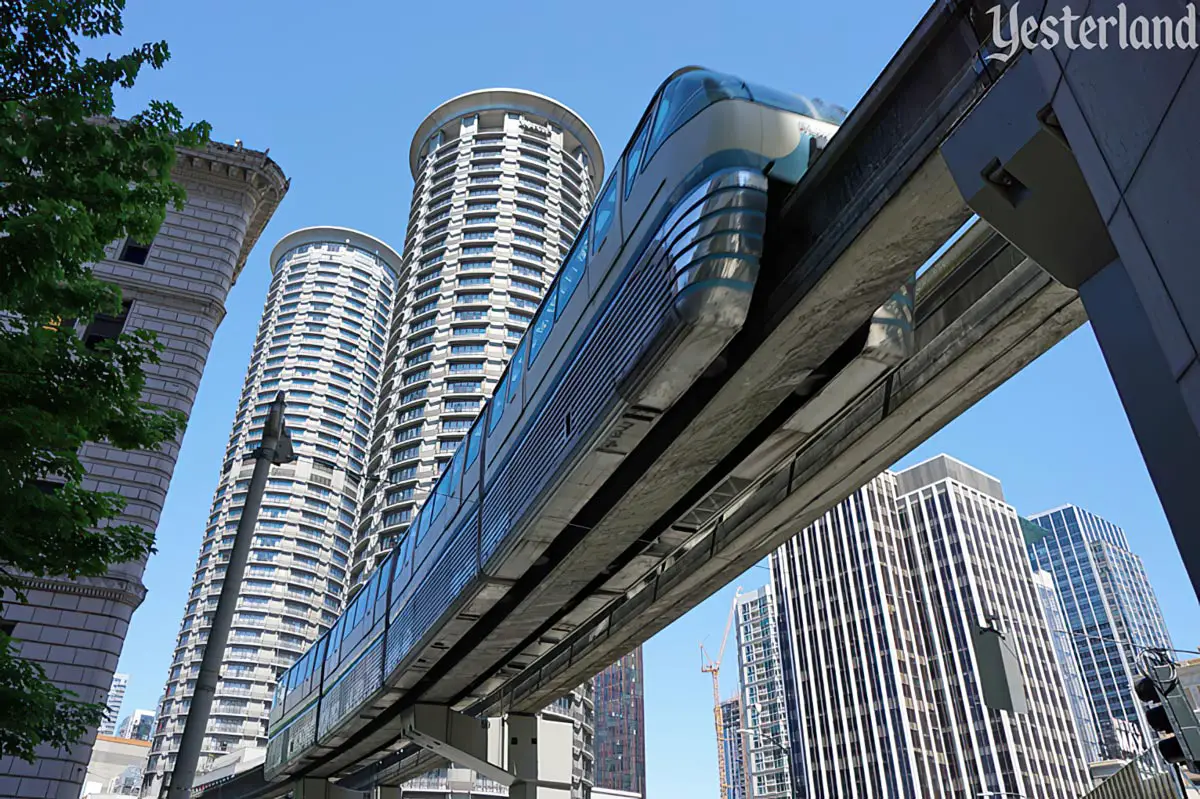
Photo by Werner Weiss, 2017 Passing the twin cylindrical towers of The Westin Seattle (built 1969 and 1982) |
||||
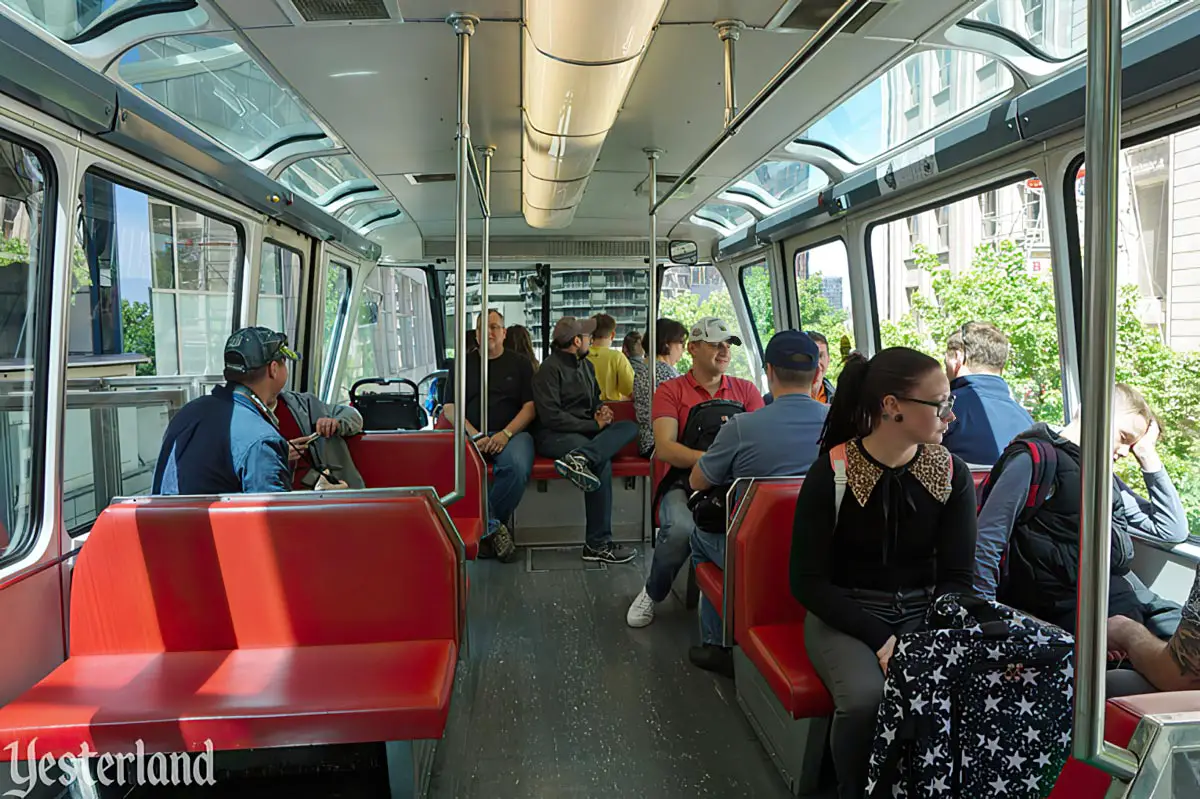
Photo by Werner Weiss, 2017 Monorail interior |
||||
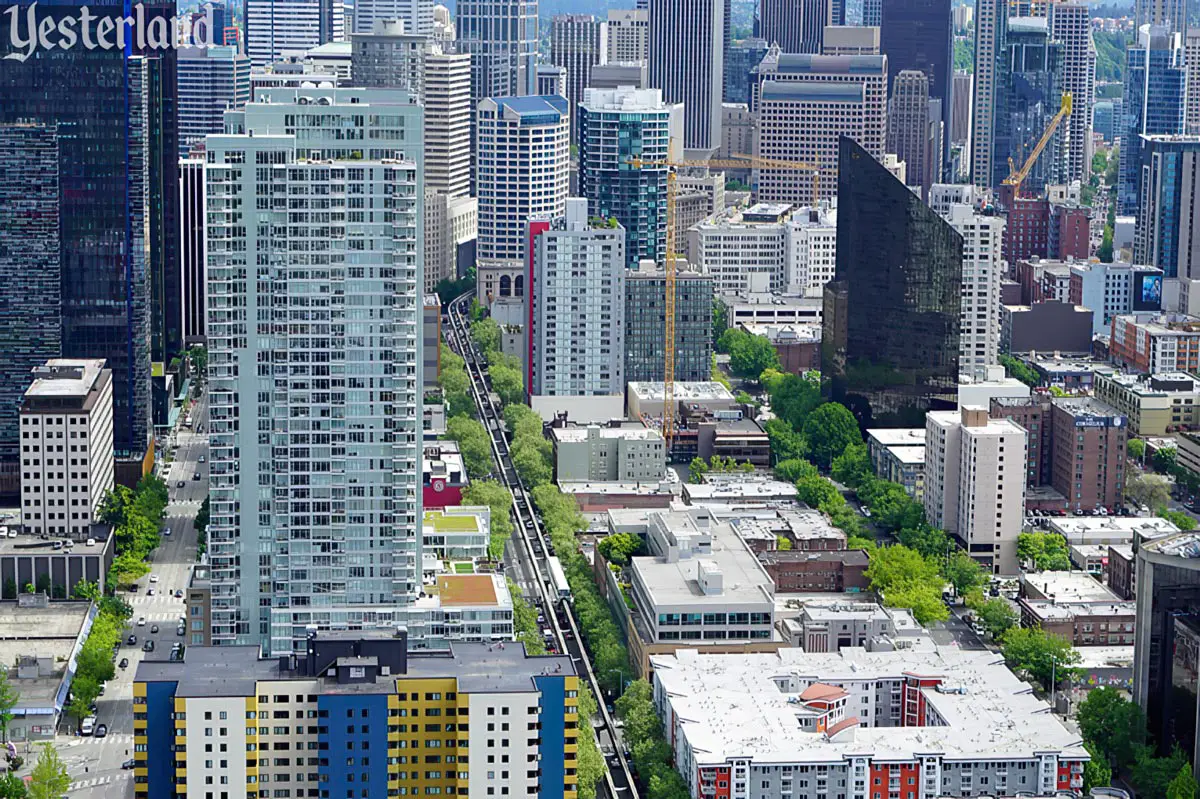
Photo by Werner Weiss, 2017 Twin track down Seattle’s 5th Avenue (photo from the Space Needle) |
||||
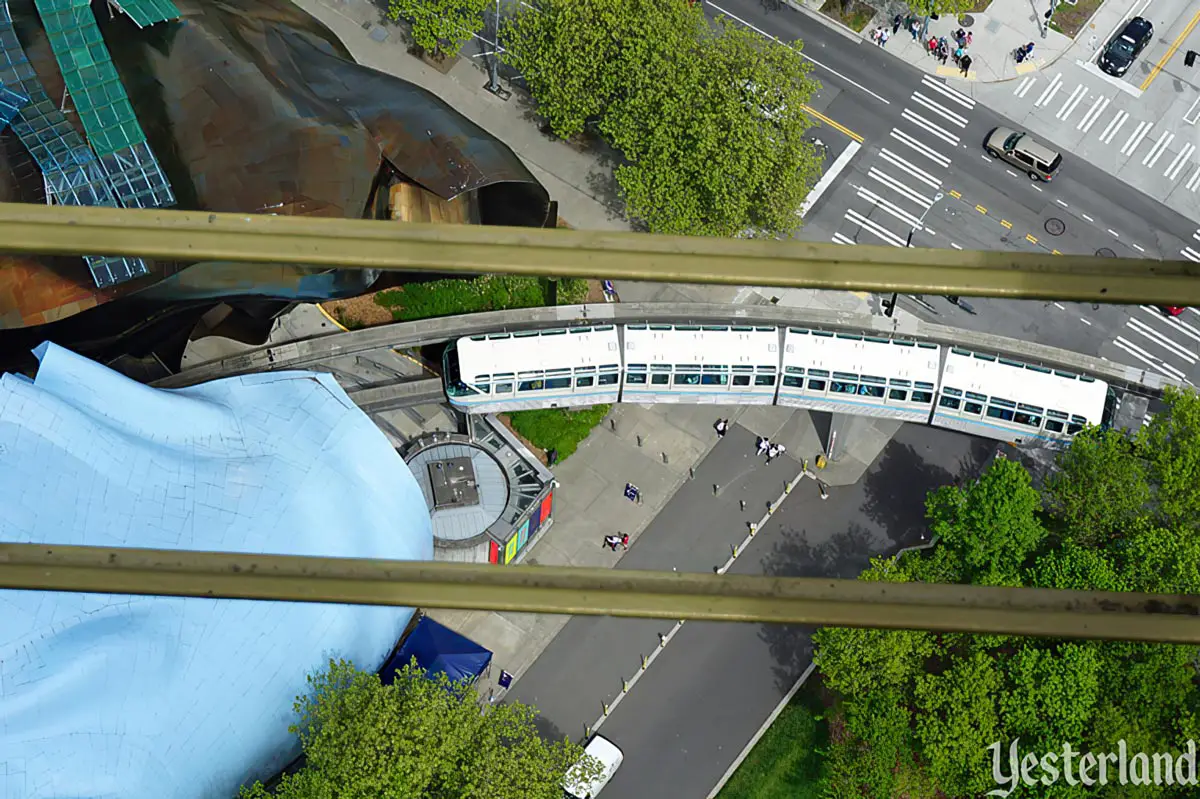
Photo by Werner Weiss, 2017 Looking down on the Monorail at the Museum of Pop Culture (MoPOP) |
||||
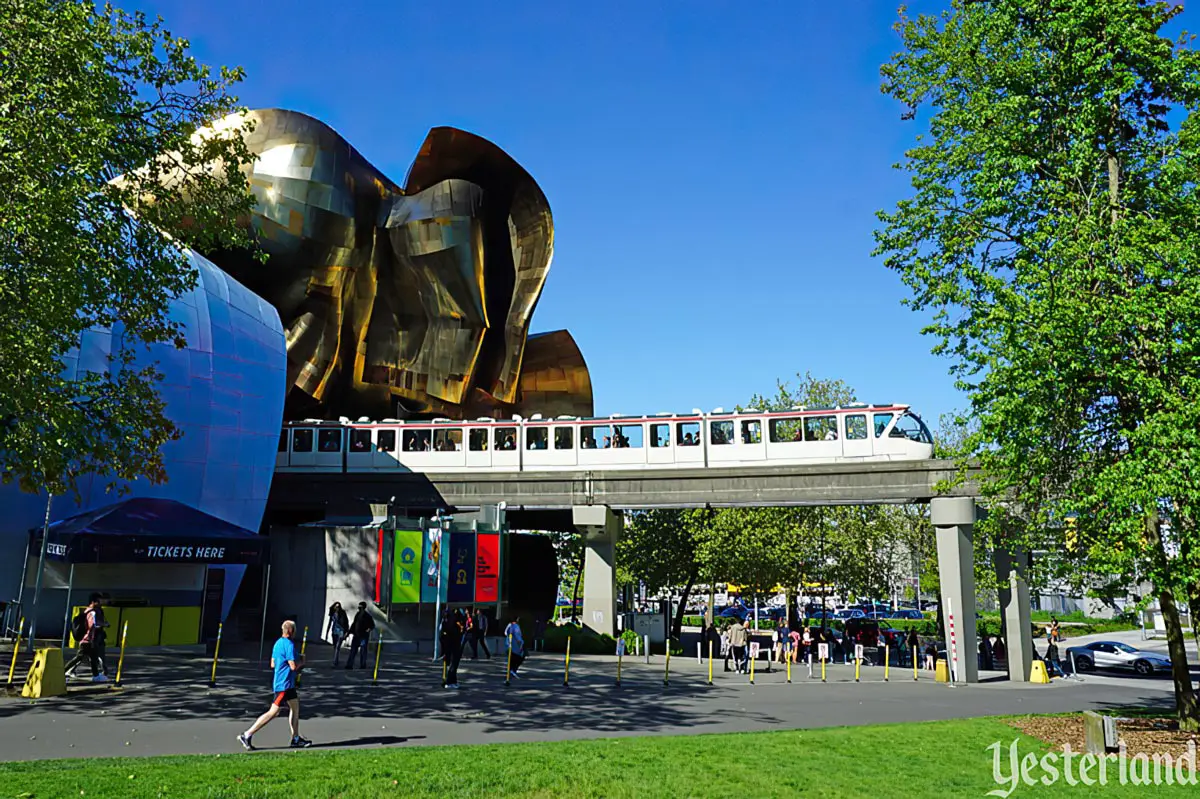
Photo by Werner Weiss, 2017 Looking up at the Monorail at the Museum of Pop Culture (MoPOP) |
||||
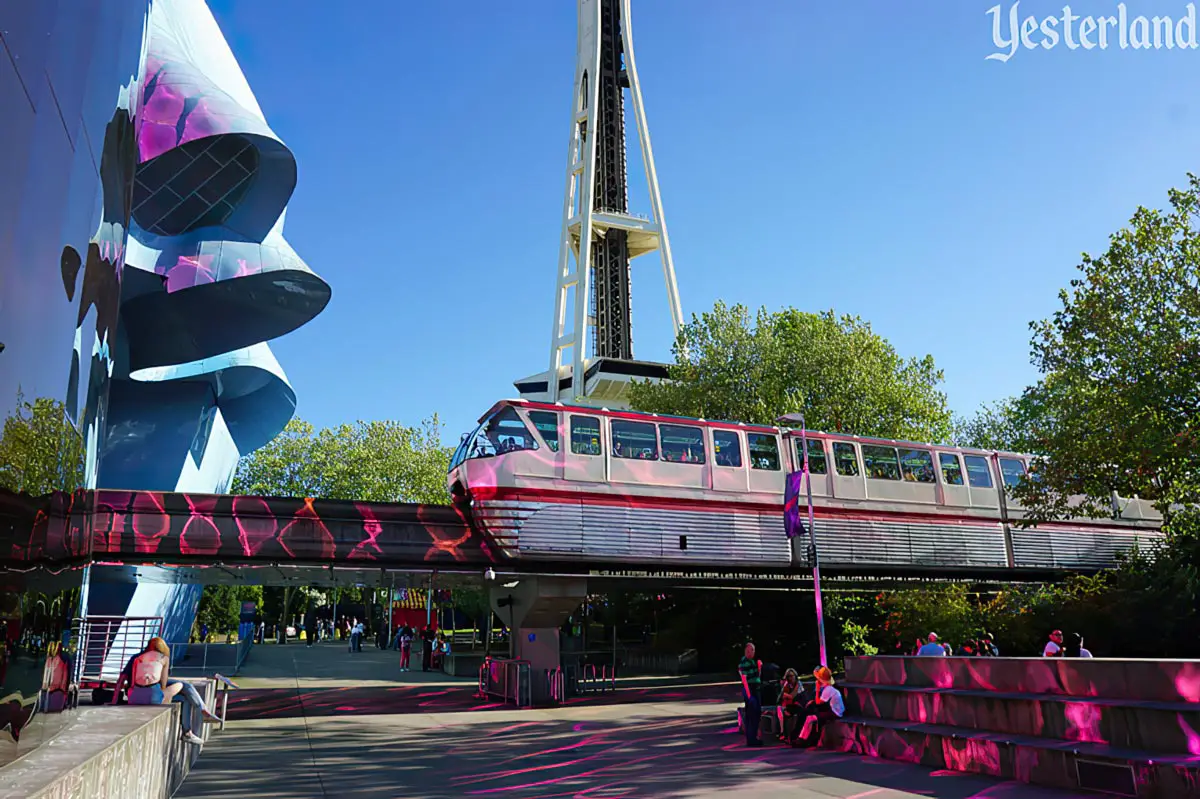
Photo by Werner Weiss, 2017 Patterns of red light reflecting off MoPOP |
||||
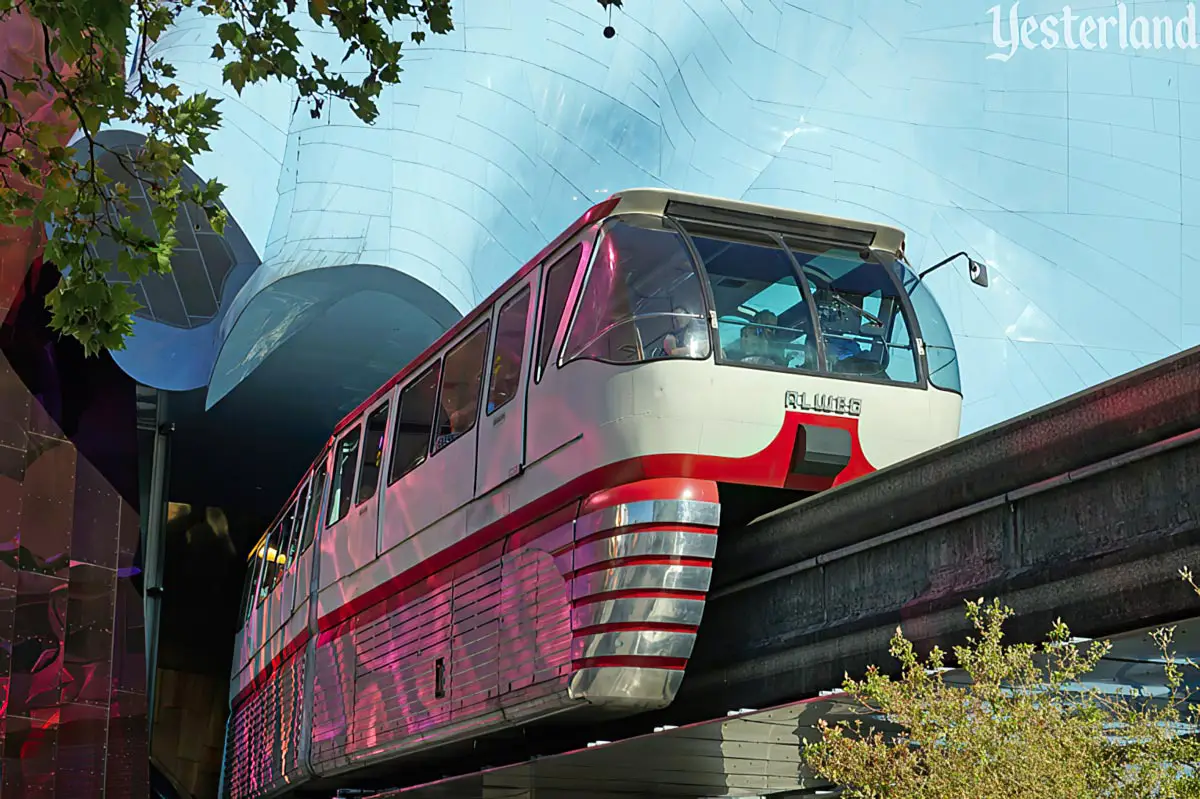
Photo by Werner Weiss, 2017 Tunnel through MoPOP |
||||
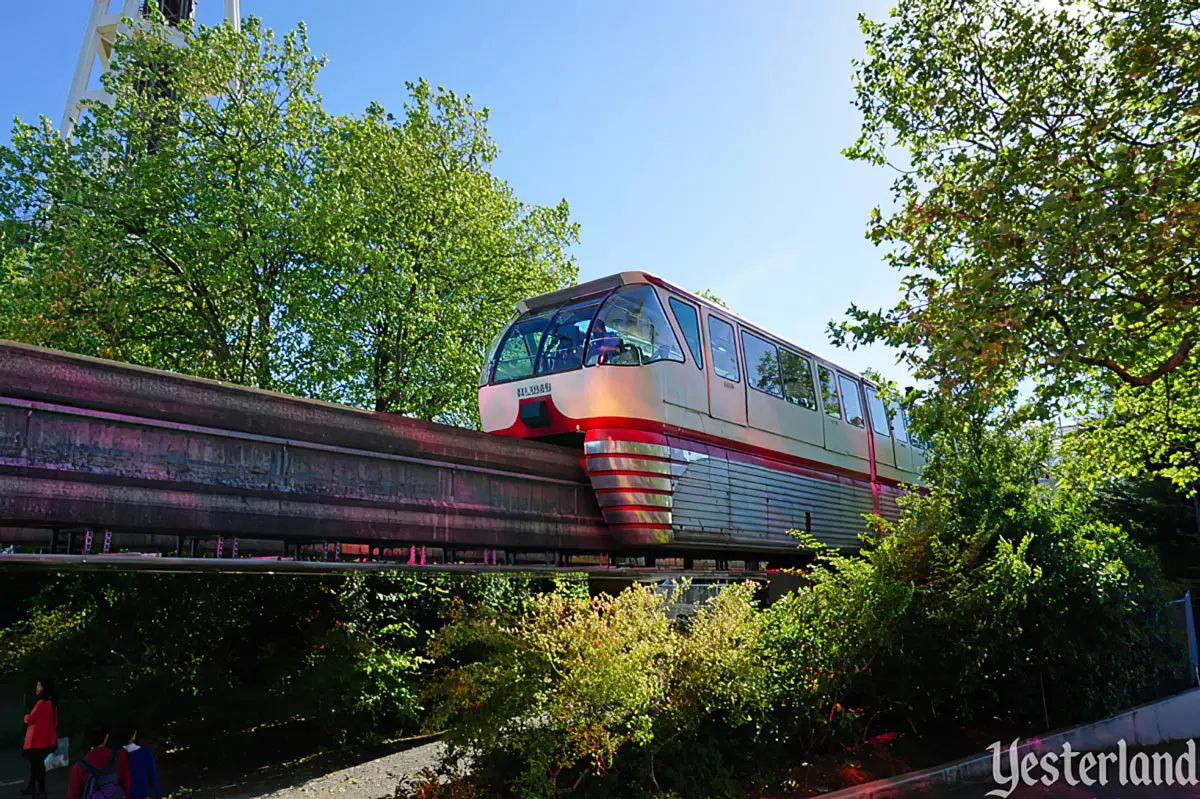
Photo by Werner Weiss, 2017 The home stretch between MoPOP and the Seattle Center station |
||||
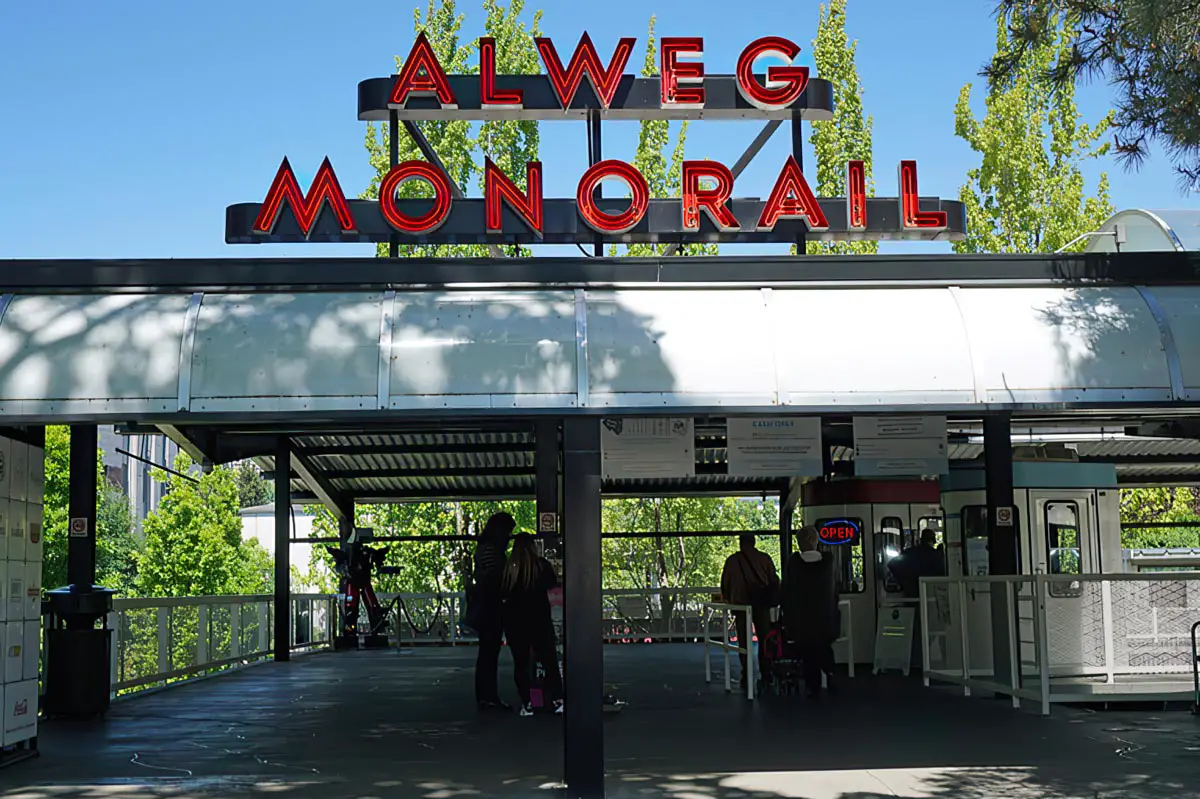
Photo by Werner Weiss, 2017 Still the original station at Seattle Center |
||||
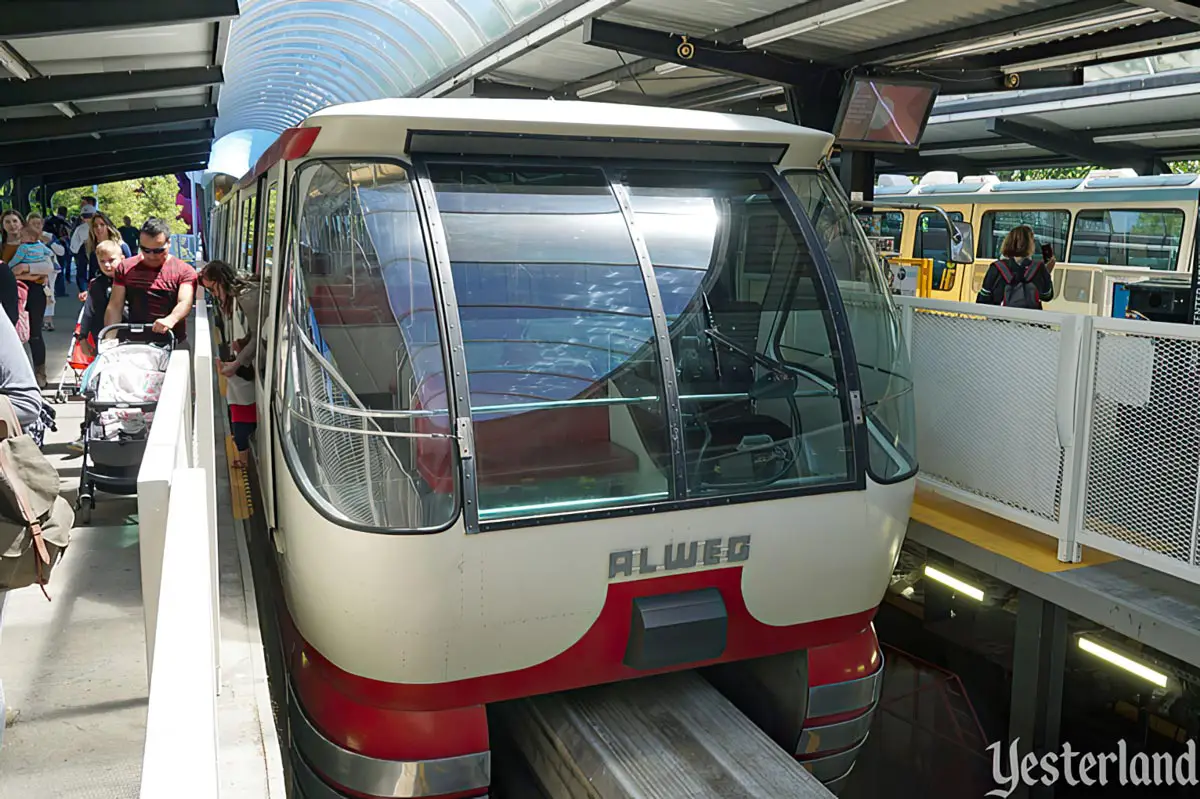
Photo by Werner Weiss, 2017 Looking good after all these years |
||||
|
In 2022, the Seattle Center Monorail marked 60 years of operation. That’s pretty good for something that was supposed to be demolished when the 1962 World’s Fair closed. The public was invited to celebrate at Seattle Center Station on March 29, 2022, with recorded music from the 1960s, doughnuts, cupcakes, a raffle, a children’s art table, and a banner for riders’ signatures. The first 200 guests received commemorative coins. The Seattle Center Monorail is now considered historic, not futuristic. But it’s also not frozen in time. In December 2022, the Federal Transit Administration (FTA) awarded a $15 million grant toward a $23 million project to make the Monorail’s Seattle Center station fully accessible under the Americans with Disabilities Act (ADA). The one-way regular fare in 2023 is $3.50. Adjusted for inflation, that’s a much better value than the $1.00 fare in 1962 ($9.97 in 2023 dollars). |
||||
|
|
Click here to post comments at MiceChat about this article.
© 2023 Werner Weiss — Disclaimers, Copyright, and Trademarks Updated August 20, 2023 |
|||